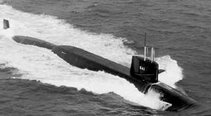Mr. Froehlich was born in 1922 and served in the US Navy during WWII as a signalman. He went on to become an aeronautical engineer and worked for Boeing and other companies before ending up at General Mills (the Cheerios people) in his native Minnesota. At General Mills he helped design high-altitude balloons for the US military before being tasked to help build a mechanical arm for the U.S. Navy-owned bathyscaphe Trieste in 1960.

Alvin Submerged (Source: NOAA)
As part of his work on balloons he specialized in designing small spheres able to endure hostile environments. Mr. Froehlich also worked on the design for a self-propelled, two-man deep-sea vessel called the Seapup.
This talent and earlier experience became crucial factors in his selection as the project leader for the design of a new US Navy deep-diving research submersible. That submersible was later named "Alvin" by the US Navy after Allyn Vine of the Woods Hole Oceanographic Institution. Vine another engineer was a key proponent for the U.S. to develop a national program for manned undersea vehicles.
Part of Mr. Froehlich team's unique design was to combine a new buoyant material called syntactic foam with hollow metal spheres to build the vessel. Confident in his design Harold even participated in one the first test dives made in 1964 near Woods Hole, Mass. -- "to the great depth of 27 feet," he later said. Years later Mr. Froehlich told Minnesota Public Radio that winning the bid to design and build Alvin was an astonishing feat, because the Navy initially "was skeptical about a Wheaties company designing a submarine."
With Vine and Navy officer Charles B. Momsen Jr son of "Swede" Momsen., Mr. Froehlich received the 1989 Elmer A. Sperry Award for "the invention, development and deployment of the deep diving submarine, Alvin." The award is sponsored by prominent engineering societies.
After leaving General Mills Mr. Froehlich went on to work for the 3M company, designing surgical equipment and retiring in 1989.
Harold "Bud" Froehich died this past week at the age of 82. An engineer at a food company who designed one of the worlds most famous deep-sea submersibles.










